Landfills are necessary for the cleanliness and health of communities across America. Pennsylvania has 37 operational landfills contributing to solid waste disposal, recycling, and more. But do they pose any risks to nearby residents or the environment? Furthermore, these landfills are usually located on the outskirts of towns or cities, so they take up a considerable amount of natural habitat. How does their presence affect the wildlife in the area? All these questions will be answered in the article below about the biggest landfill in Pennsylvania.

The Largest Landfill In Pennsylvania
Keystone Sanitary Landfill is the largest landfill in Pennsylvania. This facility is an active municipal solid waste collection site in Lackawanna County, PA. Keystone is within Dunmore and Throop boroughs. This landfill spans around 1,000 acres and currently receives about 7,000 tons of waste daily from New York, Pennsylvania, Connecticut, and New Jersey. The accepted waste primarily consists of the following:
- 77% of municipal wastes
- 10% drill cuttings from fracking
- 6% sludge and residual wastes
- 4% flood wastes
- 3% construction and demolition wastes
How Many Landfills Are In Pennsylvania?
Pennsylvania has a total of 37 operational landfills spread across the state. They include:
- GROWS North Landfill
- Fairless Landfill
- IESI Bethlehem Landfill
- SECCRA Landfill
- Tullytown Landfill
- Chrin Brothers Sanitary Landfill
- Grand Central Landfill
- Alliance Landfill
- Keystone Sanitary Landfill
- Conestoga Landfill
- Advanced Disposal Services Sandy Run Landfill
- Rolling Hills Landfill
- LCSWMA Frey Farm Landfill
- Cumberland County Landfill
- Lanchester Landfill
- Greater Lebanon Refus Authority Landifll
- Modern Landfill
- Western Berks Landfill
- IESI Blue Ridge Landfill
- Bradford County Landfill
- Lycoming County Landfill
- Wayne Township Landfill
- Arden Landfill
- Chestnut Valley Landfill
- J.J. Brunner, Inc. Landfill
- Imperial Landfill
- South Hills Landfill
- Laurel Highland Landfill
- Monroeville Landfill
- Evergreen Landfill
- Mostoller Landfill
- Shade Landfill
- Valley Landfill
- Tervita Sanitary Landfill
- Valley Landfill
- Greentree Landfill
- McKean County Landfill
What Risks Does this Landfill Present to Pennsylvania?
In 2015, Keystone Sanitary Landfill proposed an expansion, which the community strongly opposed as they were concerned about the potential environmental contamination from the landfill. Additionally, the residents are worried about odors, noise, dust, and toxic chemicals polluting the air due to the landfill’s operations and expansion. Furthermore, they are concerned this extra pollution will cause health issues like immune system disorders, cancers, nervous system disorders, liver problems, congenital disabilities, respiratory illnesses, skin problems, nosebleeds, muscular problems, and headaches. As a result, most of the community surrounding the landfill opposes the expansion plans. Unfortunately, the expansion plans were approved in June 2021.
Who Owns the Landfills In Pennsylvania?
Louis DeNaples owns the largest landfill in Pennsylvania. He is a powerful figure in Scranton and owns many businesses, like real estate holdings, an auto parts company, and many more. Additionally, Mr. DeNaples owned the Mt. Airy Casino, which was Pennsylvania’s first taste of the slots gambling industry. However, the renowned businessman had to transfer ownership to a family member due to legal issues.
In 1978, Mr. DeNaples was convicted of fraud. He falsified documents relating to federal aid provided to Scranton after Hurricane Agnes. The trail was crazy! Firstly, Mr. DeNaples pled no contest. Secondly, it came out that a member of the Bufalino crime family tried to bribe a juror on the case, and he was later convicted. However, Louis DeNaples was never implicated in the bribery case.
But his presence won’t be forgotten in Scranton anytime soon. Mr. DeNaples has donated significant sums of cash to organizations and political campaigns around the area. Furthermore, when visiting the University of Scranton, it’s hard to miss the state-of-the-art DeNaples Center. Additionally, several members of the DeNaples family sit on boards across the region.
Where is the Keystone Sanitary Landfill Located on a Map?
The city of Dunmore, Pennsylvania is home to the largest landfill in the state, Keystone Sanitary Landfill. It rests in the northeastern region of the state in Lackawanna County, 5 miles north of Scranton. The borough is close to the Pocono Mountains, a popular tourist destination for outdoor recreation.
What Wildlife Live Near the Largest Landfill in Pennsylvania?
While it’s not unheard of for landfills to poison surrounding water sources by releasing toxic chemicals, you’ll be surprised how much wildlife surrounds the largest landfill in Pennsylvania. In fact, many of these animals scavenge through the landfill for food. They include:
American Beaver
The American beaver occurs throughout Pennsylvania, with the highest population in the glaciated northeastern and northwestern counties. These amazing critters build dams and lodges on creeks and streams using mud, branches, and rocks. However, it might be hard to catch a glimpse of these beavers, and they are primarily nocturnal. But, if you are patient, you might be able to spot one in the early morning or near dusk.
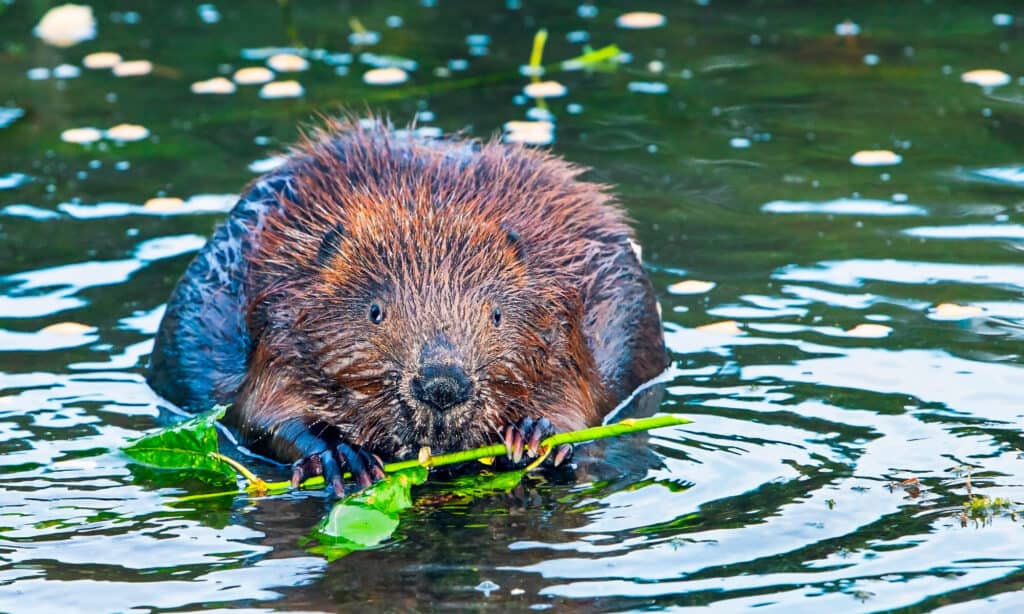
The American beaver occurs throughout Pennsylvania, with the highest population in the glaciated northeastern and northwestern counties.
©SERGEI BRIK/Shutterstock.com
White-tailed Deer
These deer are common throughout Pennsylvania. Males are called buck, and females are called does. Adult bucks in the state have an average weight of 140 pounds and measure between 32 to 34 inches at the shoulder. Furthermore, their length from the nose to the base of the tail is around 70 inches. But the tail only adds approximately 11 inches to that total. Bucks tend to be larger than does of the same age.

These deer are common throughout Pennsylvania. Males are called buck, and females are called does.
©Tom Reichner/Shutterstock.com
Common Raccoon
Raccoons are often found near rivers, lakes, or streams throughout Pennsylvania. However, they also occur in suburban areas and on ridges. These pesky critters thrive in areas with lots of human activity. Therefore, they live in cities where they find shelter in attics and storm drains. Raccoons will often raid trash cans or eat residents’ pet food. As these critters are omnivores, their diet varies and includes foods like:
- Grapes
- Wild cherries
- Raspberries
- Persimmons
- Blackberries
- Beechnuts
- Apples
- Melons
- Acrons
- Grass
- Corn
- Leaves
- Crickets
- Earthworms
- Grasshoppers
- Grubs
- Beetles
- Frogs
- Fish
- Mice
- Crayfish
- Eggs
- Carrion
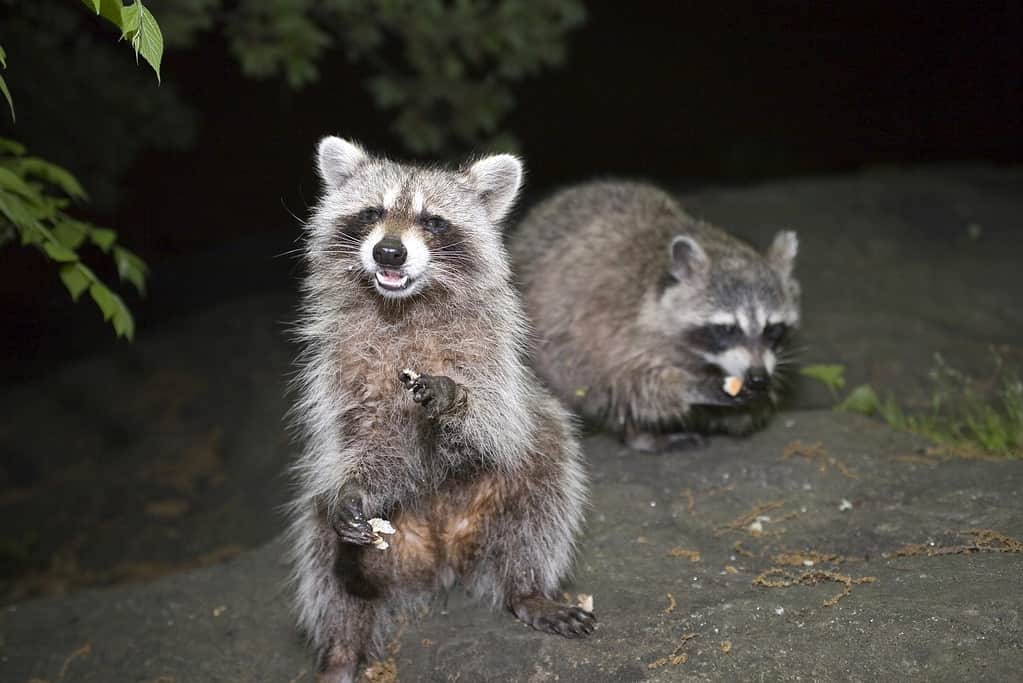
Raccoons are often found near rivers, lakes, or streams throughout Pennsylvania.
©iStock.com/eddtoro
Bald Eagle
The bald eagle occurs throughout the USA and inhabits areas surrounding the largest landfill in Pennsylvania. The state’s history with the bald eagle is a precarious one. For example, in 1983, Pennsylvania only had three bald eagle nests left. But luckily, the Pennsylvania Game Commission, the Canadian government, and several other states reintroduced these birds of prey back to the Northeast United States. As a result, there are over 300 nests in Pennsylvania today.
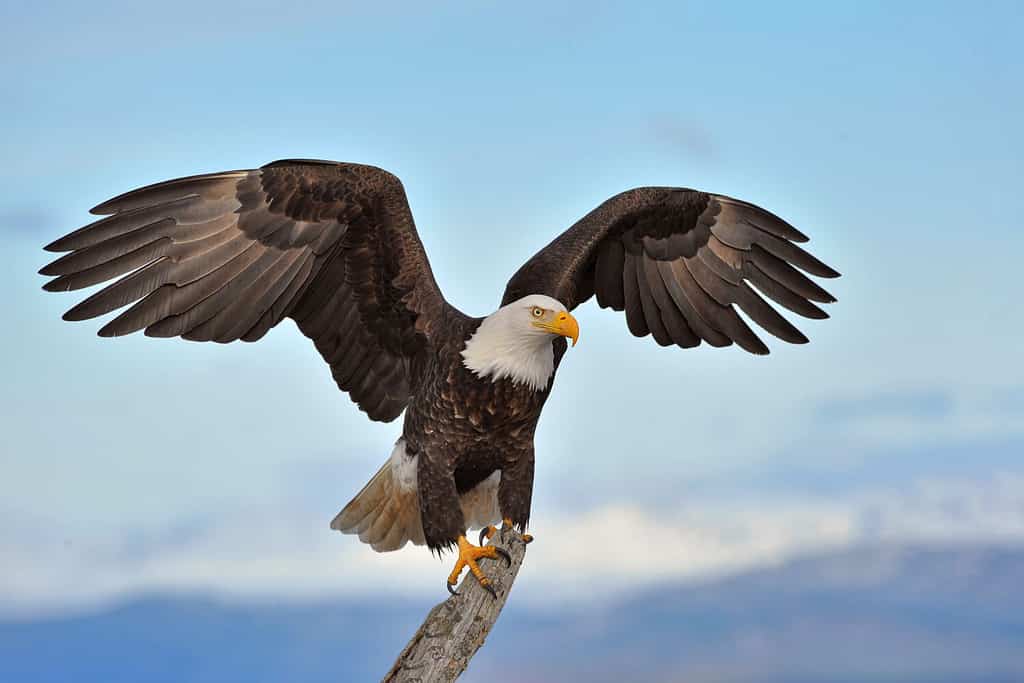
The bald eagle occurs throughout the USA and inhabits areas surrounding the largest landfill in Pennsylvania.
©FloridaStock/Shutterstock.com
Northern Saw-Whet Owl
The northern saw-whet owl resides in a variety of habitats. However, they prefer conifers, but they can inhabit multiple tree species, like spruces, tamarack, aspen, northern white cedar, eastern hemlock, Douglas fir, eastern white pine, and ponderosa pine. These owls will roost in conifers or evergreen vines or shrubs during the fall. But there is proof that breeding northern saw-whet owls occur in proximity to riparian areas. While these owls look for thick vegetation ranging from a couple of feet off the ground to 100 feet, they primarily seek out roosting sites with hiding opportunities and thermal benefits.
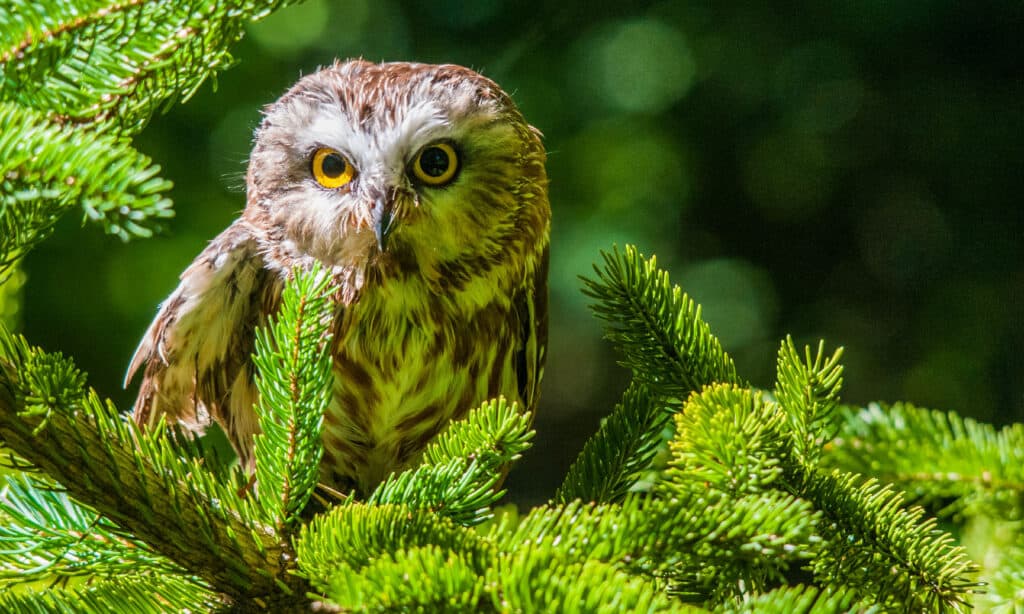
The northern saw-whet owl resides in a variety of habitats. However, they prefer conifers, but they can inhabit multiple tree species, like spruces, tamarack, aspen, northern white cedar, eastern hemlock, Douglas fir, eastern white pine, and ponderosa pine.
©iStock.com/bookguy
Eastern Milk Snake
The eastern milk snake is among the most misunderstood snakes in the state because they resemble the highly venomous northern copperhead. As a result, these snakes are often killed by community members. But they are harmless, and having one around would actually benefit you since they catch rodents and other pests. They can survive in several habitats but prefer rocky meadows, old fields, deciduous woodlands, and rocky hillsides.
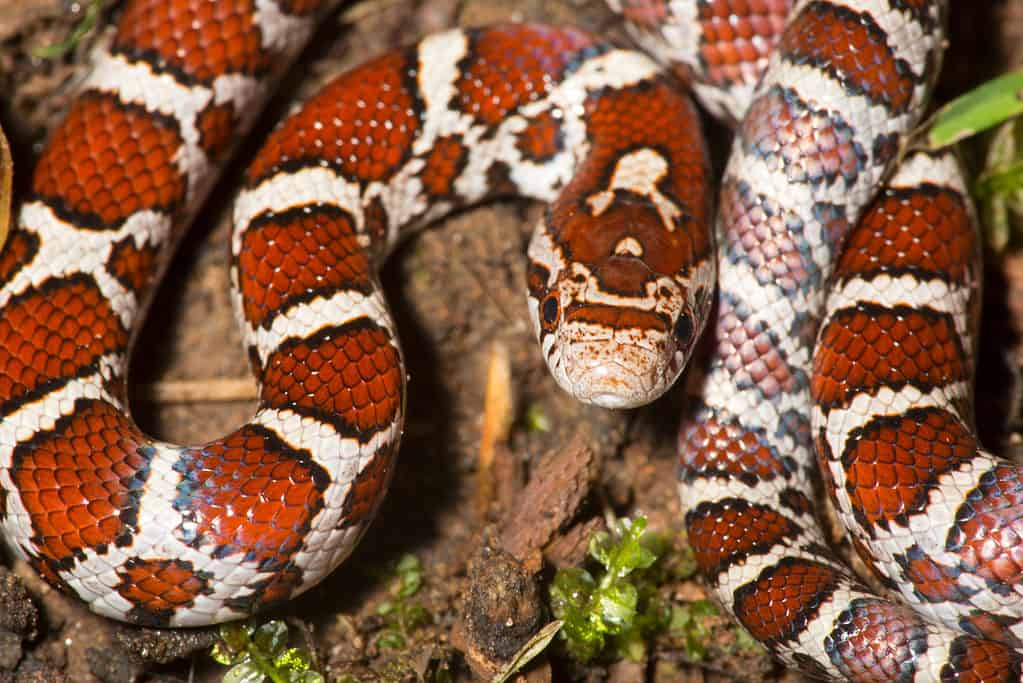
The eastern milk snake is among the most misunderstood snakes in the state because they resemble the highly venomous northern copperhead.
©Jeff Holcombe/Shutterstock.com
The photo featured at the top of this post is © Huguette Roe/Shutterstock.com
Thank you for reading! Have some feedback for us? Contact the AZ Animals editorial team.







